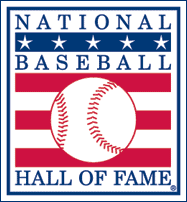
This Hall of Fame class is loaded with nine legendary players that many people wouldn’t consider your “average” Hall of Famer, including: Roger Bresnahan, Dan Brouthers, Fred Clarke, Jimmy Collins, Ed Delahanty, Hugh Duffy, Hugh Jennings, Michael Kelly, and Jim O’Rourke. Haven’t heard of any of those guys? That’s OK- neither did I until I started writing this post.
Roger Bresnahan: Catcher, New York Giants
.279 average, 684 runs scored, 1,251 hits, 26 home runs, 530 RBI, 211 stolen bases.
Now, I know what you’re thinking. Why the heck is this guy in the Hall of Fame? That stat line is fine, but not exactly legendary. However, Bresnahan’s impact on the game went far deeper than just the statistics and his presence is actually still felt in the game today. He was inducted by the Old Timers Committee because of the reputation that he had throughout the league. He played 17 seasons in his professional career for six different teams, and showed his versatility by playing all nine positions in the field. Some well-renowned baseball men, such as Branch Rickey and John McGraw, said he was one of the best catchers that had ever come in contact with because of his leadership skills. He was also the first player to experiment with wearing a helmet while catching and wearing shin guards. So, all catchers should be thanking Roger right about now.
Dan Brouthers: First Baseman, Buffalo Bisons
.349 average, 1,507 runs scored, 2,349 hits, 106 home runs, 1,296 RBI, 242 stolen bases
Before there was Honus Wagner, Ty Cobb, and Babe Ruth, there was Dan Brouthers. In history, there has to be someone to set the standard for everyone else to look up to, and that’s exactly what he did. His career spanned from 1879 to 1904, 19 total seasons during that time, and he is considered to be the first great power hitter in MLB history. He led the league in hitting five times, slugging percentage seven times, hits three times, and extra base-hits five times. What’s even more interesting is that he star was still shining bright well after his MLB career was over. We look at those 106 home runs and think that’s not a lot because people like Pujols and Howard can do that in 3-4 years. However, don’t forget that baseballs are made quite differently now. I would love to see Brouthers hit in this era.
Fred Clarke: Left Fielder, Pittsburgh Pirates
.312 average, 1,620 runs scored, 2,703 hits, 67 home runs, 1,015 RBI, 527 stolen bases
Clarke’s Major League career is quite different from the norm; he broke into the league with a 5-for-5 game, which is the way I would like to start a career off. In 11 different seasons, he hit over .300 and ranks in the top-10 all time in career triples with 220. What makes Fred Clarke different from any other MLB player that I’ve come across is that for the majority of his career, he was a full-time player-manager. During his 16-year stint as a player-manager, he led the Pirates to 14 first place finishes in their division, and not only led the club to appear in the first ever World Series in 1903, but also led the league in doubles and slugging percentage to boot. All I can say to that is wow. What a player.
Jimmy Collins: Third Baseman, Boston Red Sox
.294 average, 1,057 runs scored, 1,998 hits, 65 home runs, 983 RBI, 196 stolen bases
Again, another player without eye-popping statistics, but Collins had a stellar reputation as a clutch hitter and defensive specialist at the hot corner. However, he did hit .300 five times in his career, and also helped Boston make their presence felt in the newly formed American League when he served as a player-manager for the first six years, helping the Sox win the first modern World Series against Fred Clarke’s Pirates in 1903. Like I said, he was known for his defense, leading the league in fielding percentage for third basemen twice, and led the league in putouts as a third baseman five times, while ranking second all-time in career put-outs.
Ed Delahanty: Left Fielder, Philadelphia Phillies
.346 average, 1,596 runs scored, 2,593 hits, 101 home runs, 1,466 RBI, 481 stolen bases
With the fourth highest career batting average all-time, it’s safe to assume that Delahanty was quite the hitter during his 16 seasons, most of them with the Philadelphia Phillies. He hit over .330 on 12 different occasions, eclipsing .400 three times. He only won one batting title during his career, but led the league in slugging five times, RBI three times, runs created and extra base-hits four times. He had a knack for putting the ball in play; he is one of the few men that have hit four home runs in a game in 1896, went 6-for-6 in a game twice, and also went a perfect 9-for-9 in a doubleheader. Sam Crawford’s quote about Delahanty sums it up pretty nicely: “I think Ed was the best right-handed hitter I ever saw.”
Hugh Duffy: Center Fielder, Boston Beaneaters
.330 average, 1,545 runs scored, 2,307 hits, 106 home runs, 1,302 RBI, 597 stolen bases
Duffy was regarded as a well-rounded ballplayer; he not only played a flawless centerfield, but could also have his way with pitchers at the plate. His career spanned 17 seasons, nine of which were played with Boston, leading to four pennants. He hit better than .300 on 11 different occasions, with nine of those times coming in successive seasons. Duffy surpassed a .400 batting average once during his brilliant career, but man did he make it count. In 1894, he led the league by hitting .440, 18 home runs, 51 doubles, and 237 hits. He then added in 145 RBI for good measure. He finished in the top-five in the league for putouts by an outfielder five times.
Hugh Jennings: Shortstop, Baltimore Orioles
.314 average, 989 runs scored, 1,520 hits, 18 home runs, 840 RBI, 374 stolen bases
Jennings is another Hall of Famer that was an extraordinary player and then manager as well. He played 18 seasons in the Major Leagues and only surpassed the .300 average mark five times (.400 once), but as a shortstop, he was known as the leader of his ballclub, and helped Baltimore to appear in the Temple Cup World Championship Series four years in a row. One of the things that he probably wasn’t too happy about was that he led the league in hit by pitches five times and tops the all-time list in that category. However, his defensive reputation was second-to-none, leading the league in putouts by a shortstop four times. Once he decided to start managing, he led Detroit to three straight AL pennants from 1907-09, and finished with 1,184 career wins.
Michael Kelly: Right Fielder, Chicago White Stockings
.313 average, 1,359 runs scored, 1,853, 69 home runs, 950 RBI, 315 stolen bases
Whenever someone has the nickname “King,” you know that they’re pretty important. During his 16-year career, he hit over .300 eight times, winning two batting titles. Kelly hit .354 in 1884 and .388 in 1886 while leading the league in runs scored and on-base percentage in both of those years as well. His antics on the base paths were one of the things that he was known for the most while he was helping Chicago win five pennants. The King’s biggest claim to fame was being credited with being the originator of the hit-and-run play. So, all managers must thank King Kelly for helping them move runners around the bases.
Jim O’Rourke: Left Fielder, New York Giants
.314 average, 1,425 runs scored, 2,314 hits, 50 home runs, 1,208 RBI, 197 stolen bases
Jim O’Rourke had a wonderful career in professional baseball, which spanned much longer than his playing days. He hit over .300 in 13 different seasons out of his 23 season career, which ended at the tender age of 53. For the 16-year period between 1876 and 1892, he only trailed fellow Hall of Famer Cap Anson in games played, hits, at-bats, doubles, and total bases. The pride of East Bridgeport, Connecticut holds the honor of lodging the first base hit in National League history. He also was involved in the game as a manager, umpire, and Minor League president.
Like I said before, the Hall of Fame class of 1945 was loaded with a lot of players that many people haven’t heard much about, but now you know why they’re all enshrined with baseball’s highest individual honor.














